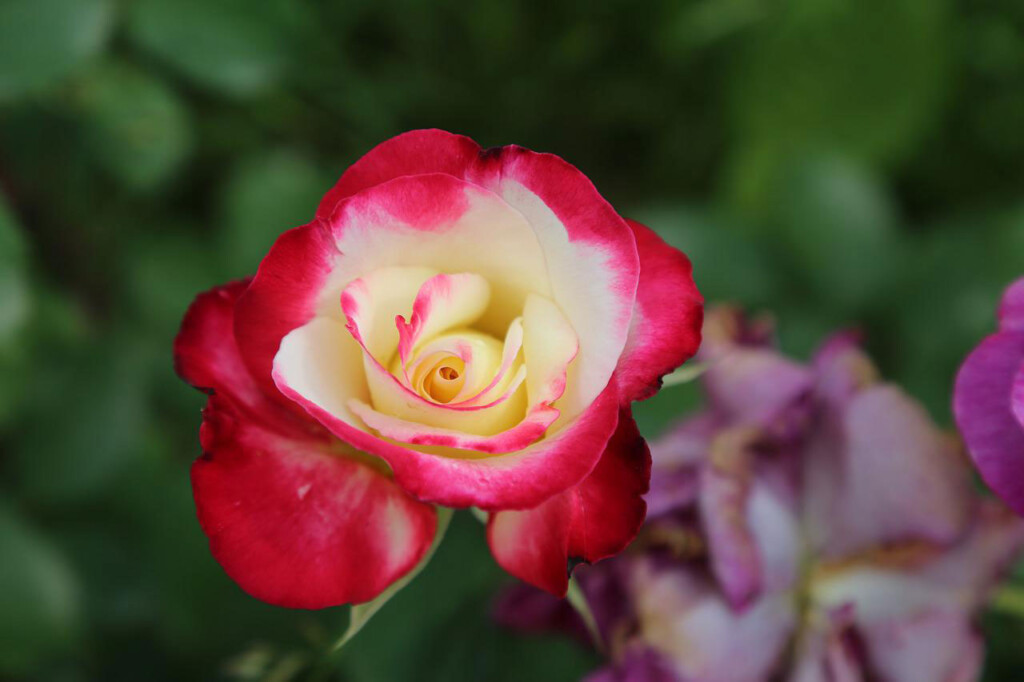
Q: Is it okay to apply lime at the same time as you apply grass seed?
A: Yes, they can be applied at the same time. It’s best to first do a soil test to check the pH (which measures acidity and alkalinity of the soil) to determine that lime is needed. A very low pH (below 6.0) means the soil is acidic, causing important plant growth nutrients to become “bound up” in the soil making them unavailable to the plant. Over time, liming will gradually raise the pH in your soil and free up these nutrients.
Q: My __(name of plant)_____ still hasn’t gotten any leaves yet. Is it dead?
A: Probably. Try scratching the bark of the branches and twigs with your fingernail or a pen knife –if it is bright green underneath it will possibly re-foliate. If it is dull green or brown underneath, see if the twigs snap off, which most likely indicates they are dead. By this time you should see leaves.
Q: Are hybrids the same as GMOs?
A: The term “hybrid” refers to a plant variety developed through a specific, controlled cross of two parent plants. Usually, the parents are naturally compatible varieties within the same species. This hybridization, or the crossing of compatible varieties, happens naturally in the wild; plant breeders basically just steer the process by cross-breeding compatible types of plants in an effort to create a plant with the best features of both parents. These are called hybrids and many of our modern plants are the results of these crosses.
“Genetically modified organisms” or GMOs are created in a lab using highly complex technology, such as gene splicing. These high-tech GM varieties can include genes from several species — a phenomenon that almost never occurs in nature. GMOs can be any plant, animal or microorganism which has been genetically altered using molecular genetics techniques such as gene cloning and protein engineering.
Q. My yard feels “squishy”- someone suggested I might have moles!
A: That’s very possible, as mole tunnels can definitely make a lawn feel squishy!
Moles are kind of ugly, though you probably won’t see much of them, because they stay underground, feasting on their favorite food GRUBS (Beetle larvae).
The best way to get rid of the moles is to get rid of the grubs, either by applying Bayer Grub Control (24-hour or season-long) or by using Milky Spore, an environmentally friendly biological control that lasts for many years.
When the grubs are gone, the moles leave town, too!
Q. My roses have black spots on the leaves – what should I do?
A: Blackspot – a fungus that manifests itself on rose bushes as black spots on leaves progressing to black spots fringed with yellow rings on both sides of the leaves. As they develop the spots enlarge. Eventually, as the disease spreads, the entire leaves will go from green to yellow and then drop to the ground. With time the entire rose bush may become defoliated. New leaves are the most susceptible.
Blackspot is worst during wet weather, especially humid weather. The fungus becomes active in a wet environment with a temperature of about 75 degrees. It needs about 7 hours of these conditions to germinate and then symptoms will begin to appear on rose foliage within three to ten days. Spores can over winter in the garden so autumn cleanup is crucial otherwise the entire cycle can repeat itself the following spring and summer. Hybrid teas and smaller rose bushes be spaced 3 feet apart and larger rose bushes be spaced 4 feet apart from one another.
Infected roses:
- Prune off the damaged parts of the plant
- Dispose of this diseased material in bags or burn it. Do not add to the composter,
- Do an end of season cleanup so the spores will have nowhere to hide over winter.
Preventative measures in early spring:
While plants are dormant in spring, spray thoroughly with fungicidal soap and wettable sulphur. Sulphur washes off in rain and so must be reapplied repeatedly. The product is sold in powder or liquid form and also works well against mildew and rust.
- Keep the leaves dry when watering (try soaker hoses or drip irrigation methods): Water in the morning so that foliage has a chance to dry off throughout the day
- Prune plants to improve air circulation: Space the plants well when planting will insure good air circulation. It is recommended
- Preventative formula to minimize further attack: Using fungicidal soap or sulphur several times over the course of summer is one solution (especially after rain as these products tend to wash off).
Some suggest these non-chemical controls, while other sources dispute their effectiveness:
- Solution made with baking soda: Dissolve 1 teaspoon baking soda in a quart of water, add a few drops of liquid soap to the mix to help it cling better to the foliage, spray infected plants thoroughly.
- Manure Tea: This formulation fights blackspot, as well as mildew and rust, while providing foliar nutrition. Place one gallon of well-composted manure in a 5-gallon bucket and fill with water. Stir the mixture well and let sit in a warm place for three days. Strain the mixture through a cheesecloth or mesh and use the resulting tea to spray disease affected plants (the solids left behind can be applied around the base of the plants as added fertilizer).
- NEEM oil: This oil has been reported effective by some.

